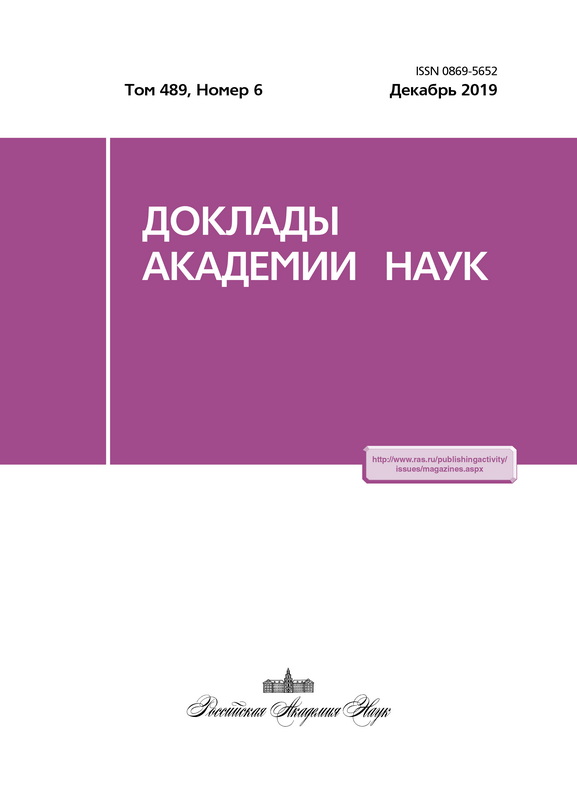Potassium salt of fullerenylpenta-N-dihydroxytyrosine effects on type 2 diabetes mellitus therapeutic targets
- Authors: Soldatova Y.V.1,2, Kotelnikova R.A.1, Zhilenkov A.V.1, Faingold I.I.1,2, Troshin P.A.1,3, Kozlova M.A.2, Areshidze D.A.1,2, Aldoshin S.M.1
-
Affiliations:
- Institute of Problem of Chemical Physics of the Russian Academy of Science
- Moscow Region State University
- Skolkovo Institute of Science and Technology
- Issue: Vol 488, No 3 (2019)
- Pages: 338-341
- Section: Biochemistry, biophysics, molecular biology
- URL: https://journals.eco-vector.com/0869-5652/article/view/16277
- DOI: https://doi.org/10.31857/S0869-56524883338-341
- ID: 16277
Cite item
Abstract
It was shown for the first time that pentaamino acid derivative of fullerene C60 (potassium salt of fullerenylpenta-N-dihydroxytyrosine) effects on three targets of type 2 diabetes mellitus. It competitively inhibits the enzymes aldose reductase and sorbitol dehydrogenase and also exhibits antiglycation effect on bovine serum albumin. The enzymes inhibition constants were calculated.
About the authors
Yu. V. Soldatova
Institute of Problem of Chemical Physics of the Russian Academy of Science; Moscow Region State University
Author for correspondence.
Email: soldatovayv@gmail.com
Russian Federation, 1, Acad. Semenov av., Chernogolovka, Moscow region, 142432; 24, Very Voloshinoy street, Mytishi, 141014
R. A. Kotelnikova
Institute of Problem of Chemical Physics of the Russian Academy of Science
Email: soldatovayv@gmail.com
Russian Federation, 1, Acad. Semenov av., Chernogolovka, Moscow region, 142432
A. V. Zhilenkov
Institute of Problem of Chemical Physics of the Russian Academy of Science
Email: soldatovayv@gmail.com
Russian Federation, 1, Acad. Semenov av., Chernogolovka, Moscow region, 142432
I. I. Faingold
Institute of Problem of Chemical Physics of the Russian Academy of Science; Moscow Region State University
Email: soldatovayv@gmail.com
Russian Federation, 1, Acad. Semenov av., Chernogolovka, Moscow region, 142432; 24, Very Voloshinoy street, Mytishi, 141014
P. A. Troshin
Institute of Problem of Chemical Physics of the Russian Academy of Science; Skolkovo Institute of Science and Technology
Email: soldatovayv@gmail.com
Russian Federation, 1, Acad. Semenov av., Chernogolovka, Moscow region, 142432; 3, Nobelya street, Moscow, 143026
M. A. Kozlova
Moscow Region State University
Email: soldatovayv@gmail.com
Russian Federation, 24, Very Voloshinoy street, Mytishi, 141014
D. A. Areshidze
Institute of Problem of Chemical Physics of the Russian Academy of Science; Moscow Region State University
Email: soldatovayv@gmail.com
Russian Federation, 1, Acad. Semenov av., Chernogolovka, Moscow region, 142432; 24, Very Voloshinoy street, Mytishi, 141014
S. M. Aldoshin
Institute of Problem of Chemical Physics of the Russian Academy of Science
Email: soldatovayv@gmail.com
Academician of the Russian Academy of Science
Russian Federation, 1, Acad. Semenov av., Chernogolovka, Moscow region, 142432References
- World Health Organization. Noncommunicable Diseases Progress Monitor. Geneva: WHO, 2017. 231 p.
- International Diabetes Federation. Diabetes Atlas. 8th ed. Brussels, Belgium, 2017. 147 p.
- World Health Organization. Global report on diabetes. Geneva: WHO, 2016. 86 p.
- Yan L. // Anim. Model. Exp. Med. 2018. V. 1. № 1. P. 7-13.
- Zheng H., Wu J., Jin Z., et al. // Biochem. Insights. 2016. № 9. P. 1-9.
- Yeh W.J., Hsia S.M., Lee W.H., et al.// J. Food Drug Anal. 2017. V. 25. № 1. P. 84-92.
- Jagdale A.D., Bavkar L.N., More T.A., et al. // J. Diabetes Complications. 2016. V. 30. № 3. P. 398-405.
- Патент № 2669341, РФ. Применение пентааминокислотных производных фуллеренов в качестве антиоксидантов и антидиабетических средств. Котельникова Р.А., Арешидзе Д.А., Солдатова Ю.В., и др., заявл. 6.04.2016, опубл. 10.10.2018 Бюл. № 28.
- Hosseini A., Abdollahi M., Hassanzadeh G., et al. // Basic Clin. Pharmacol. Toxicol. 2011. V. 109. № 5. P. 381-386.
- Nedzvetskii V.S., Pryshchepa I. V., Tykhomyrov A.A., et al. // Neurophysiology. 2016. V. 48. № 2. P. 130-140.
- Abdel Motaal A., El-Askary H., Crockett S., et al. // Phytomedicine. 2015. V. 22. № 9. P. 829-836.
- Алексеев В.В. Медицинские лабораторные технологии. Руководство по клинической лабораторной диагностике. Москва: ГЭОТАР-Мед, 2013. 792 с.
- Березин И.В., Клесов А.А. Практический курс химической и ферментативной кинетики. М.: Изд. Моск. ун-та, 1976. 320 с.
- Chen Y.F., Roan H.Y., Lii C.K., et al. // J. Med. Plants Res. 2011. V. 5. № 11. P. 2322-2331.
- Saito R., Tokita M., Uda K., et al. // Tetrahedron. 2009. V. 65. № 15. P. 3019-3026.
Supplementary files








